Once absent from the space "playground", China is now one of the few countries that can send people into space and launch spacecraft to other planets.
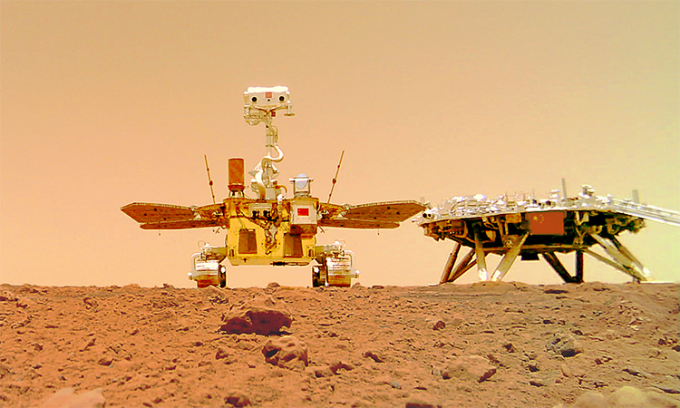
Zhu Rong robot and China's landing station on Mars. Photo: CNSA
In 1957, the Soviet Union shocked the world when it successfully launched the first artificial satellite into space, Sputnik 1. At that time, the late Chinese president Mao Zedong was said to have lamented: China could not even put a potato into space. At that time, space was completely empty of China.
In 2023, after more than 6 decades of pursuing the "space dream", China has made the world admire when it not only successfully launched many satellites, built its own space station, put people into Earth orbit, but also sent robots to land on other celestial bodies such as the Moon and Mars. Today, China is always an indispensable name when mentioning the world's space powers.
The development of China's space program
In 1957, Mao Zedong announced that China would launch its own satellite. With the help of Soviet technology and scientists such as Qian Xuesen, who had studied and worked in the United States, the country built an ambitious space program.
The first major milestone came in 1970, when China launched its first artificial satellite, Dongfanghong 1, from the Jiuquan launch center in Gansu province. Despite its unsophisticated technology, the satellite made China the fifth country to put a satellite into orbit after the Soviet Union, the United States, France and Japan.
Buoyed by the success of Dongfanghong 1, China announced plans to send two astronauts into space in 1973. The plan, called Project 714, was officially approved in 1971. However, the project was canceled due to political instability during that period.
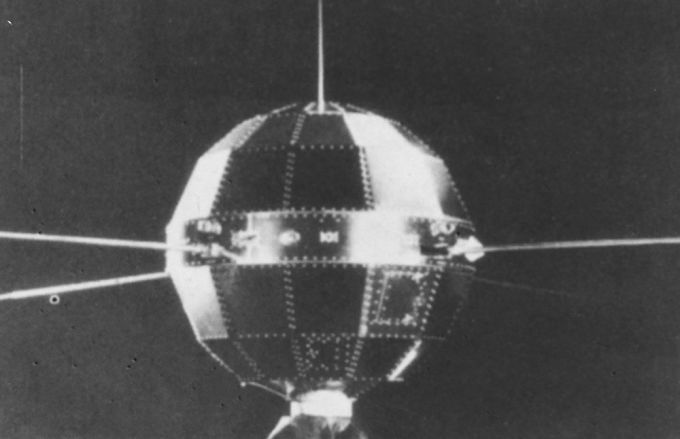
Dongfanghong-1 satellite. Photo: Xinhua
By the 1980s, China began launching satellites regularly and entered the commercial market, offering satellite launch services to other companies and countries at low prices.
In 1992, China announced Project 921, which aimed to launch a manned spacecraft into space and return it to Earth. This goal was achieved in 2003, making China the third country after the United States and the Soviet Union to use its own rockets to send people into space. At that time, astronaut Yang Liwei had a space trip of about 21 hours aboard the Shenzhou 5 spacecraft.
In the following years, as China's economy grew rapidly, the government began to invest heavily in its space program. According to SCMP , spending on spacecraft research and development increased from 22.6 million USD in 2000 to 433.4 million USD in 2014.
Over the past decade, China has been reaping success after success, attracting great attention around the world. In 2013, the Jade Rabbit robot of Chang'e 3 landed on the moon, becoming the first Chinese robot to do so, and the first robot in the world to land on the moon in nearly 4 decades. In 2018, China launched Chang'e 4, carrying the Jade Rabbit 2 rover. In 2019, Jade Rabbit 2 successfully landed on the far side of the moon, making China the first country in history to do so.
2020 marked several milestones in China’s space exploration. In December, the Chang’e 5 spacecraft landed on the Moon and brought back samples of rock and soil to Earth. This was the first time in 44 years that lunar samples were successfully brought back (the previous sample collection was by the Soviet Luna-24 spacecraft in 1976). In July, China launched Tianwen 1, the country’s first spacecraft to fly to another planet. The spacecraft landed on Mars in May 2021, making China the second country to do so, after the United States.
In 2022, China will complete Tiangong, a space station it began developing in 2011. The space station currently consists of three modules and is operated by rotating three-person crews. When the International Space Station (ISS) is decommissioned, expected in 2030, Tiangong could become the only space station in orbit for scientific research.
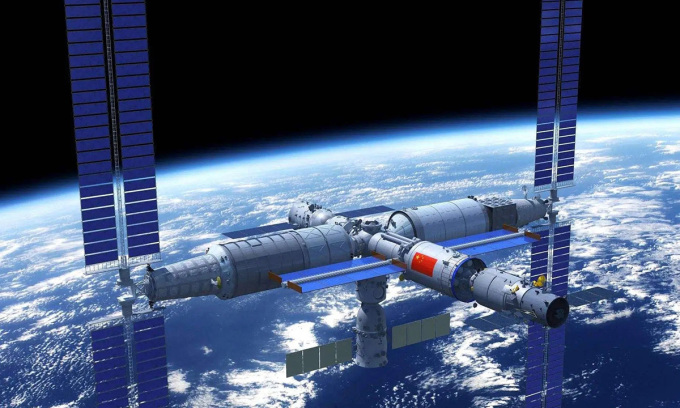
Simulation of the Tiangong space station operating in Earth orbit. Photo: CMSEO
China's future space exploration plans
One of China's most prominent space projects is to send humans to the Moon before the end of 2030. "The project will also aim to live on the lunar surface for a short time, collect samples and conduct research," Lin Xiqiang, deputy director of China's Crewed Space Administration, said after the launch of the Shenzhou 16 manned spacecraft in May this year.
Another important project is to cooperate with Russia to build a base on the Moon. According to Svetla Ben-Itzhak, associate professor at the University of Air (Alabama, USA), the International Lunar Research Station (ILRS) will be located at or near the south pole of the Moon. Crewed missions, both long-term and short-term, related to the base are expected to be deployed in the early 2030s.
“Some of China’s goals include exploring the Moon to study the prospects of exploiting lunar energy resources and materials, training humans to leave Earth, establishing long-term research stations, developing products and industries in outer space, and establishing a self-sufficient extraterrestrial colony,” Ben-Itzhak told the Indian Express.
Other future missions include expanding the Tiangong space station, launching another spacecraft to Mars, and aiming to launch spacecraft to Jupiter and Saturn.
The impact of China's space program on the world
China's spectacular space achievements actually benefit all of humanity, Dumitru Prunariu, the first and only Romanian astronaut to fly into space, said at the Asia's Century international conference in July 2022.
In 2021, China spent up to $16 billion on its space program, second only to the United States with a budget of $60 billion, an impressive number. Meanwhile, India is among the 7 countries that spend the most on space. "Regional security dynamics, China's new capabilities in the space field can push India to go further in developing its own space capabilities," Ben-Itzhak shared in the Indian Express.
When the International Space Station (ISS) is retired in the next few years, Tiangong may become the only station left in operation. The Tiangong station is expected to host more than 1,000 scientific experiments during its lifetime, including an international project between CMSA and the United Nations Office for Outer Space Activities (UNOOSA). The China National Space Administration (CNSA) has expressed its willingness to cooperate internationally and allow non-Chinese astronauts to participate in future missions to the station. In addition to welcoming foreign astronauts, the station may even open its doors to tourists by the end of the decade.
China is also working with Russia to build an ILRS – a human base on the Moon. CNSA and the Russian space agency Roscosmos have invited other countries to join the program. If successful, ILRS will be an important milestone in humanity's journey to conquer other celestial bodies.
Thu Thao ( Synthesis )
Source link




![[Photo] Hanoi morning of October 1: Prolonged flooding, people wade to work](https://vphoto.vietnam.vn/thumb/1200x675/vietnam/resource/IMAGE/2025/10/1/189be28938e3493fa26b2938efa2059e)







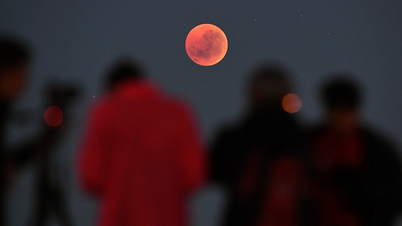




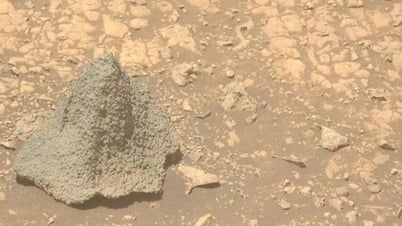


















![[Photo] The 1st Congress of Phu Tho Provincial Party Committee, term 2025-2030](https://vphoto.vietnam.vn/thumb/1200x675/vietnam/resource/IMAGE/2025/9/30/1507da06216649bba8a1ce6251816820)
![[Photo] Panorama of the cable-stayed bridge, the final bottleneck of the Ben Luc-Long Thanh expressway](https://vphoto.vietnam.vn/thumb/1200x675/vietnam/resource/IMAGE/2025/9/30/391fdf21025541d6b2f092e49a17243f)
![[Photo] President Luong Cuong receives President of the Cuban National Assembly Esteban Lazo Hernandez](https://vphoto.vietnam.vn/thumb/1200x675/vietnam/resource/IMAGE/2025/9/30/4d38932911c24f6ea1936252bd5427fa)
























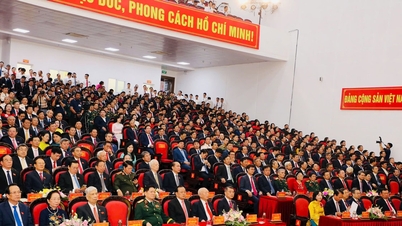

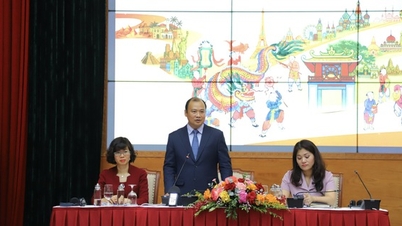






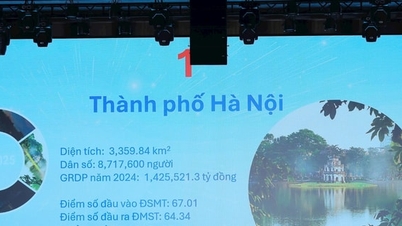

























Comment (0)